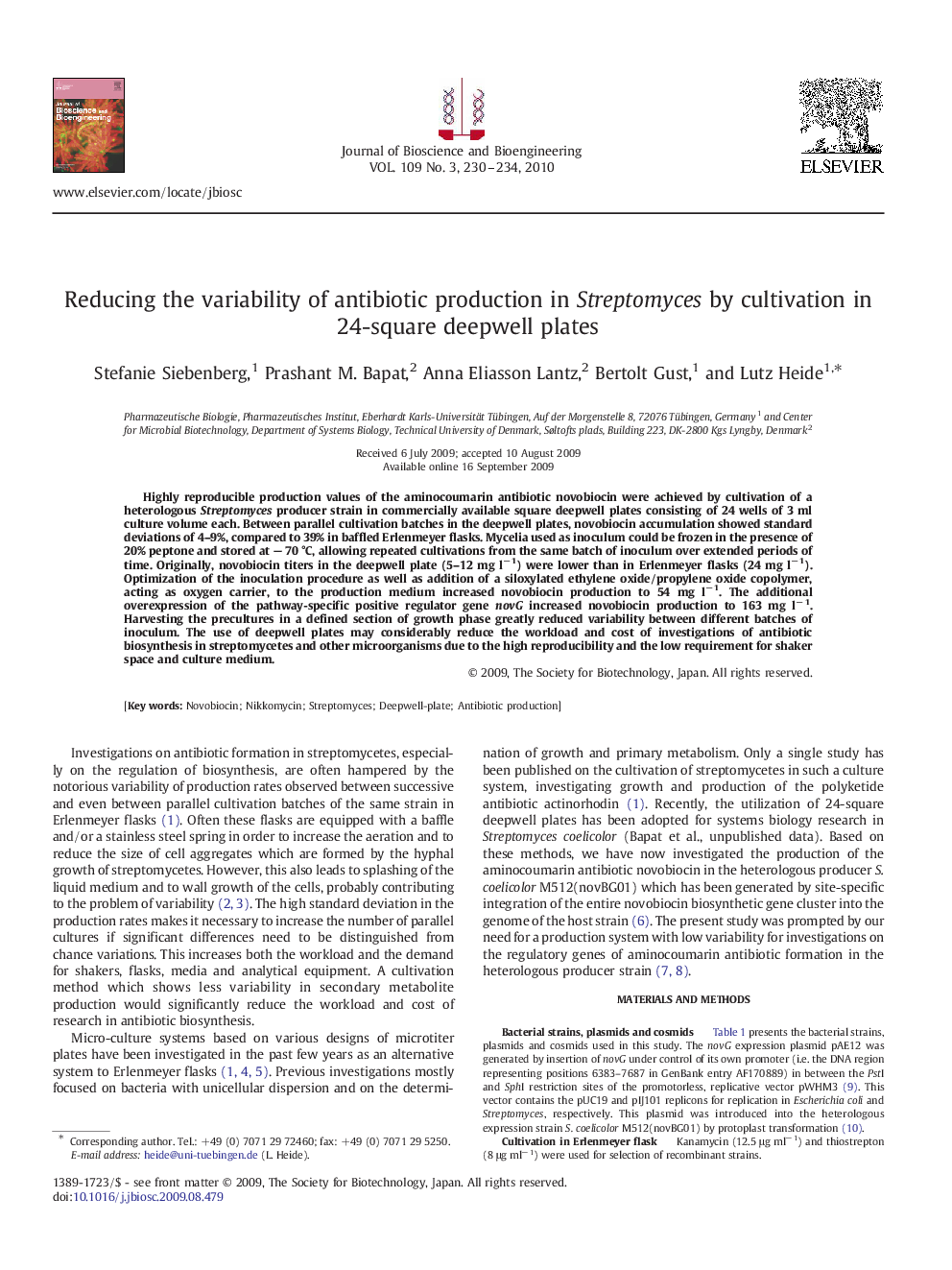| Article ID | Journal | Published Year | Pages | File Type |
|---|---|---|---|---|
| 21458 | Journal of Bioscience and Bioengineering | 2010 | 5 Pages |
Highly reproducible production values of the aminocoumarin antibiotic novobiocin were achieved by cultivation of a heterologous Streptomyces producer strain in commercially available square deepwell plates consisting of 24 wells of 3 ml culture volume each. Between parallel cultivation batches in the deepwell plates, novobiocin accumulation showed standard deviations of 4–9%, compared to 39% in baffled Erlenmeyer flasks. Mycelia used as inoculum could be frozen in the presence of 20% peptone and stored at − 70 °C, allowing repeated cultivations from the same batch of inoculum over extended periods of time. Originally, novobiocin titers in the deepwell plate (5–12 mg l− 1) were lower than in Erlenmeyer flasks (24 mg l− 1). Optimization of the inoculation procedure as well as addition of a siloxylated ethylene oxide/propylene oxide copolymer, acting as oxygen carrier, to the production medium increased novobiocin production to 54 mg l− 1. The additional overexpression of the pathway-specific positive regulator gene novG increased novobiocin production to 163 mg l− 1. Harvesting the precultures in a defined section of growth phase greatly reduced variability between different batches of inoculum. The use of deepwell plates may considerably reduce the workload and cost of investigations of antibiotic biosynthesis in streptomycetes and other microorganisms due to the high reproducibility and the low requirement for shaker space and culture medium.
